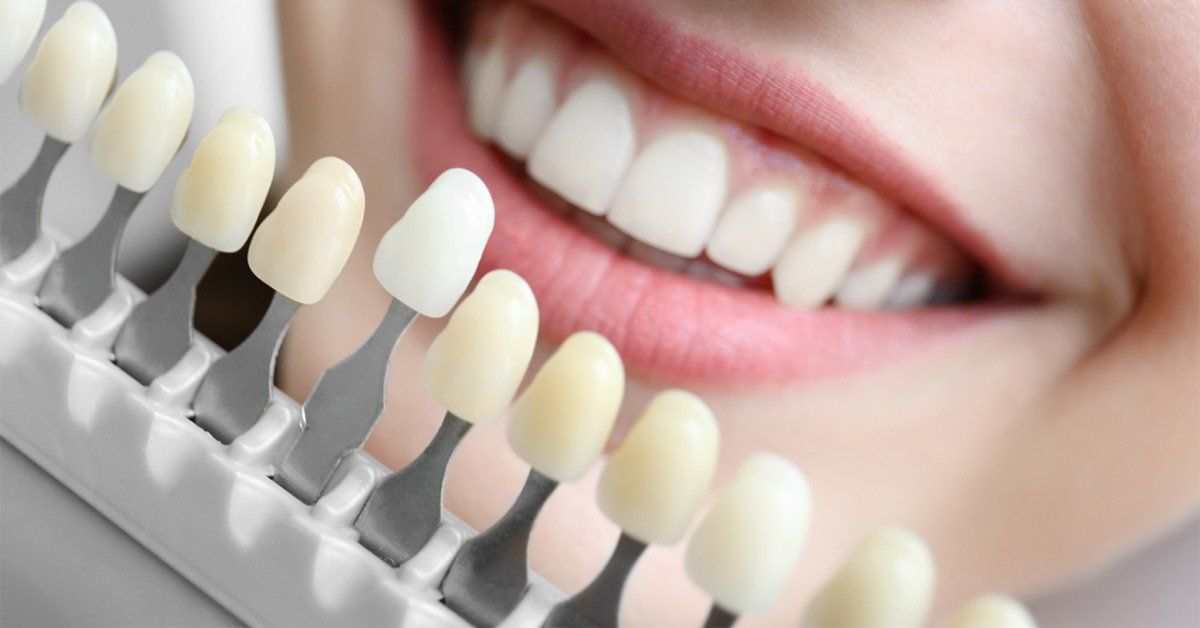
Wear and tear is inevitable throughout life, and our teeth are not exempt from it. To crack is human; to endure early-offset damage via injury is…well, let’s face it: not divine. Unfortunately, teeth are not regenerative body parts—at least, not if you’re an adult—and tooth-based injuries are irreparable. Luckily, there are teeth-mimicking solutions available at your dentist. They can be almost as good as the real thing!
Dental crowns—aka customised artificial teeth—are chosen to match your teeth’s colour scheme. Constructed from a durable material—typically porcelain: an obvious choice for its white shade and stain resistance—these false teeth are available in a range of different types. For a pretty penny, your dentist can install them via surgical procedure. They can be an excellent choice for people with irreparably damaged teeth, but they are a lifelong commitment. Here’s everything you need to know.
Table of Contents
Dental Crown Types
Dental crowns can be made from a range of different materials, including:
- Porcelain (the most common type, as discussed above)
- Ceramic
- Metals and metal alloys, including gold
- Zirconia
- Composite resin
- A blend of different materials (for instance, blends of porcelain and metal make for a solid compromise between aesthetic appeal and sturdiness).
As with many things, each different dental crown has pros and cons. When choosing your crown, factors to consider include:
- For example, if you’re replacing a front tooth, you may want to choose porcelain, ceramic, zirconia, or composite resin. These materials mimic a natural tooth colour and may better blend into your overall smile.
- Function and placement of the tooth replacement. If you’re replacing a tooth that has hitherto borne the brunt of some heavy-duty chewing, you may want to choose something containing metal that won’t cave under pressure.
- Sizing up the situation. Will there be room for your crown?
- Lifestyle factors. Are you replacing a tooth due to a sporting injury? If so, then a crown made from breakable, chippable porcelain may not be a sustainable investment.
- Cost (more on that later).
- Allergies! Did you know that metal is not always a hypoallergenic option? If this is an issue for you, there are definite materials from which you should steer clear.

In terms Of aesthetics, porcelain or ceramic dental crowns are the most similar to the real thing.
Dental Crown Eligibility
Whilst dental crowns are top-notch teeth replacements, it’s important to note that nothing beats the original. Dental crowns are used in the case of severe tooth trauma where the existing tooth is rendered unfit for use anymore. If your tooth is cracked, weakened, or worn down—or has a severe cavity burning a hole in…well, itself—then it might be time for a dental crown.
Crowns are often also installed as protective measures following root canal surgery. A tooth without its nerves and pulp is essentially a zombie tooth: it’s still there but its function is limited. It may be in your best interests to shield your dead tooth with a dental crown.
Cost
No matter how you look at it, dental crowns are going to be expensive. In Australia, the pricing tends to range from $1,100 to $2,000 per crown. Costs will vary by material. For apparent reasons, gold crowns are the most expensive. At the other end of the scale, metal or metal alloys tend to be the cheapest. As aforementioned, metal crowns are not always the most allergy-friendly option, and so hypoallergenic folks may need to part with more money for the sake of their comfort and health. If you’re in the market for a dental crown, you’re likely not on a tight budget, and so you should consider investing in quality. After all, this thing is going to be inside your mouth on a very long-term basis. You may as well splash a little cash for something comfortable.

Thanks for the offer, but you’re gonna need more than that to cover your dental crown.
Procedure
When it comes to the procedure, there are two options: a multi-day procedure or a same-day procedure.
A multi-day procedure unfolds as follows:
- Your dentist may make a mould of your mouth or tooth beforehand. This is part of the examination process, whereby they may take some tooth X-rays for reference.
- Your dentist will file the tooth and remove part of its exterior, ensuring it can accommodate the crown. Please note this process is irreversible as teeth are not regenerative.
- Your dentist will take an impression of your now-trimmed tooth, as well as the teeth surrounding it.
- Your dentist will place a protective temporary crown atop the altered tooth.
- Your dentist will send the impression off to the lab, where your customised crown will come to life. Please note there will be a delay of several weeks.
- Upon your second appointment, your dentist will cement the crown to your tooth.
A same-day procedure, on the other hand, goes more like this:
- Your dentist will take digital photos of your mouth’s interior.
- Using these pictures as a template, your dentist will make the crown on the spot. This will take between one and two hours.
- Finally, your dentist will cement the crown into place. The whole thing is over in two to four hours.

Aftercare
A crown is a lifelong commitment that takes maintenance. You will need to replace it every few years—and the longevity will vary depending on which material you’ve chosen. There are other things you can do to prolong its life, too, such as:
- Maintaining the recommended dental routine of brushing and flossing daily. Brush your teeth at least twice a day.
- Avoiding hard foods. Remember your crown is not a natural tooth and may be more inclined to break. For instance, it would be a bad idea to bite into boiled lollies. Porcelain crowns are particularly vulnerable here.
- Investing in a night guard—if you clench or grind your teeth at night. Speak to your dentist about protecting your new crown and the teeth surrounding it.






